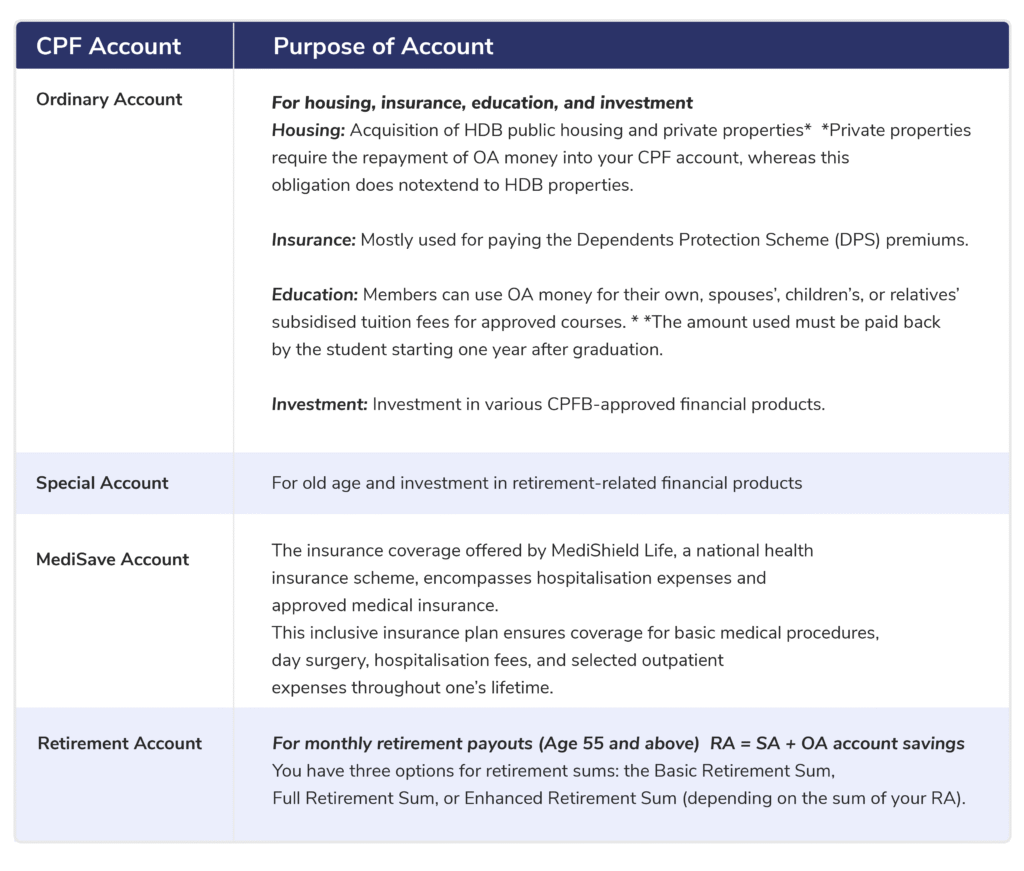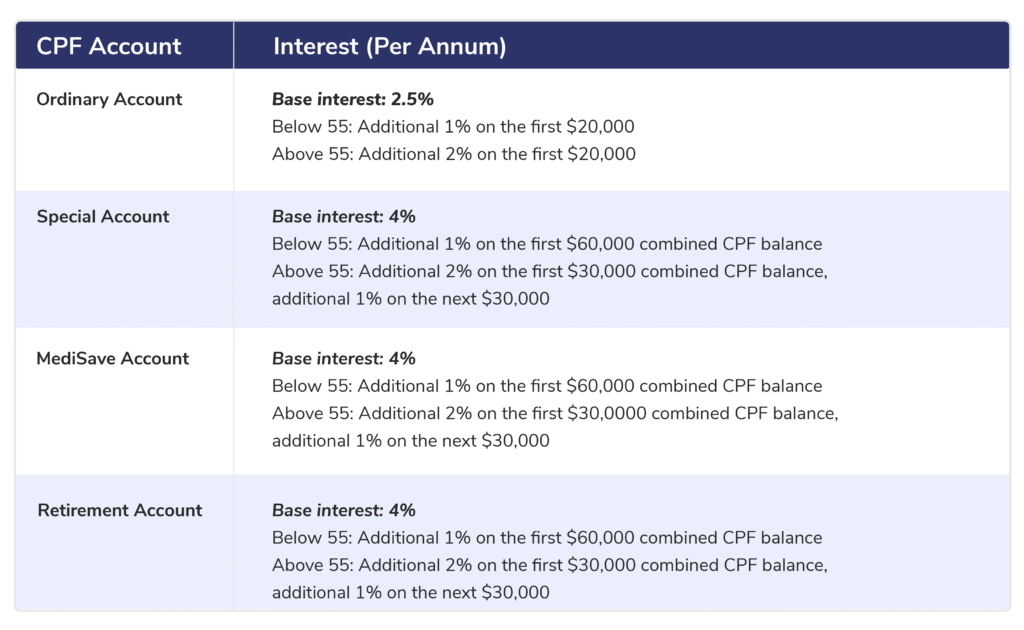The Central Provident Fund (CPF) is a crucial social security savings scheme that the government of Singapore has set up. Both employers and employees finance this initiative to safeguard the financial stability of Singaporeans and PRs. The core purpose of CPF revolves around three fundamental retirement needs: a comfortable retirement, medical costs, and facilitating homeownership. To accomplish these objectives, individuals must set aside a specific percentage of their monthly earnings into designated CPF accounts. This CPF guide aims to familiarise you with the basics of CPF, explore the allocation in CPF accounts, the types of CPF accounts, the interest rates, and more.
CPF Contribution Rates for 2024
The CPF contributions for employees who are Singapore Citizens or PRs consist of the employee’s contribution and the employer’s contribution. These contributions are deducted automatically from the employee’s salary. Individuals can contribute up to 20% of their salary to their CPF accounts, while employers can supplement the contribution by up to 17% of the employee’s salary to their CPF account.
Employers are solely responsible for contributing to your CPF accounts until your monthly earnings surpass $500. Once your salary exceeds this threshold, a percentage ranging from 5% to 20% will be deducted for CPF contributions. It is mandatory for Singaporean citizens and PRs to contribute to their CPF accounts from their very first job, irrespective of its nature, be it permanent, contractual, or part-time.
To make it easier for you, check out the CPF contribution rates as laid out by CPFB!
CPF Contribution Salary Caps
There are two types of wages – Ordinary Wage (OW) and Additional Wage (AW). The OW refers to our monthly salary. Starting from 1 January 2024, the CPF monthly contributions will be subject to a monthly salary cap of $6,800. As per the announcement made in Budget 2023, the salary cap will increase gradually to $8,000 by 2026.
This elevation in the CPF salary cap guarantees the CPF system’s ongoing relevance in fulfilling our retirement requirements. The Additional Wage (AW) encompasses bonuses, leave pay, allowances, and any other salary components. It is necessary to make CPF contributions on these wages, ensuring they do not exceed the CPF Annual Limit.
CPF Annual Limit
The CPF Annual Limit signifies the maximum amount of money that goes into your CPF account within a year. Presently, this limit is $102,000, encompassing compulsory and voluntary contributions.
Types of CPF Accounts
Your CPF contributions will be in three essential accounts: the Ordinary Account (OA), MediSave Account (MA), and Special Account (SA). Once you reach 55 years old, a Retirement Account (RA) is established to cater to your future needs.

CPF Interest Rates
Here are the CPF interest rates your savings could earn across your CPF accounts as of 1 January 2024:

Conclusion
CPF can seem puzzling and complicated but there is no denying the significance of this scheme for every Singaporean and PR. CPF serves as a foundation to ensure a more comfortable retirement awaits us. We hope this CPF guide will help you understand the ins and outs of CPF better!
CPF Calculator
Unsure about your CPF entitlements? Quickly compute your CPF figures using our CPF Calculator and receive the results in less than 5 minutes!

